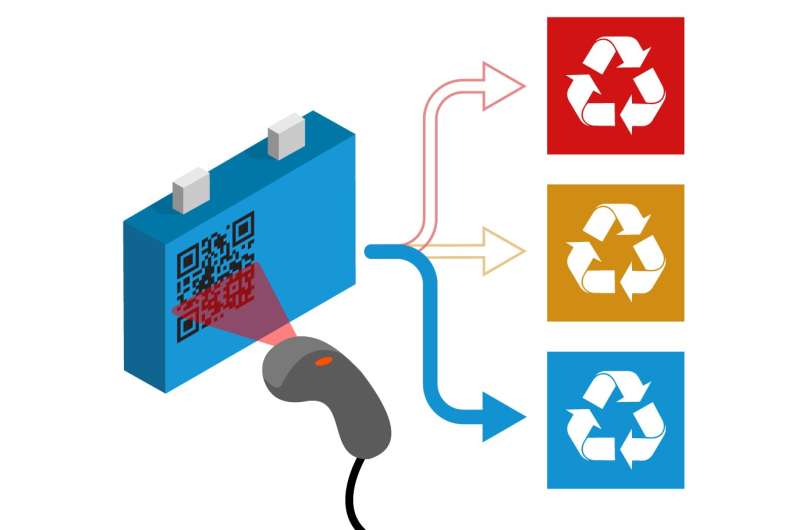Recycling – A batteries passport

Scientists at Oak Ridge National Laboratory have devised a method to identify the unique chemical makeup of every lithium-ion battery around the world, information that could accelerate recycling, recover critical materials and resolve a growing waste stream.
Similar to how plastics are stamped with a recycling code identifying their makeup, Li-ion batteries could be encoded with what ORNL researchers described as a Battery Identity Global Passport, which could be accessible as a scannable QR code or a computer chip. This method could help recyclers more efficiently locate in-demand materials and accommodate the wide variety of designs used to manufacture Li-ion batteries.
"This passport can help recyclers contend with the mixed stream of materials since there's no standard cell chemistry now for Li-ion battery production," said ORNL's Ilias Belharouak. "The challenge is growing as we see more of these batteries used in electric vehicles, for energy storage and in electronic devices."
More information: Yaocai Bai et al. Energy and environmental aspects in recycling lithium-ion batteries: Concept of Battery Identity Global Passport, Materials Today (2020). DOI: 10.1016/j.mattod.2020.09.001



















